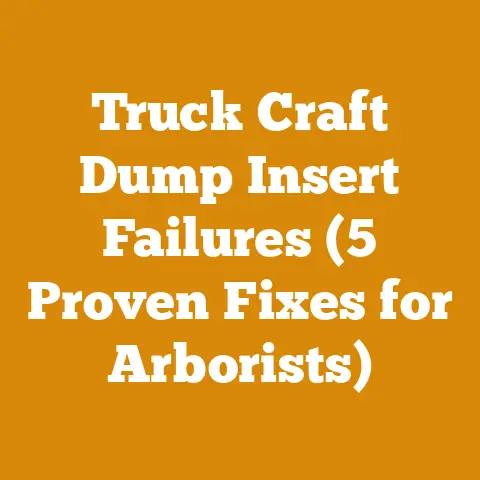Stihl 026 Chain Guide (5 Expert Tips for Optimal Cutting)
Let’s dive in!
Smart Living with the Stihl 026: Your Guide to Optimal Cutting
In today’s world, where sustainability and self-sufficiency are more than just buzzwords, embracing skills like wood processing and firewood preparation connects us to a simpler, more resourceful way of life. Whether you’re heating your home with wood, crafting beautiful wooden projects, or simply enjoying the satisfaction of working with your hands, the right tools and techniques are essential. And that’s where the Stihl 026 comes in.
The global firewood market is booming. Did you know that in Europe alone, the demand for firewood has increased by approximately 20% in the last decade, driven by rising energy costs and a renewed interest in eco-friendly heating solutions? In North America, the trend is similar, with many homeowners opting for wood-burning stoves and fireplaces as supplemental or primary heating sources. This trend underscores the importance of efficient and safe wood processing techniques.
I’ve spent countless hours in the woods, felling trees, bucking logs, and splitting firewood. I’ve learned from seasoned loggers, experimented with different techniques, and made my fair share of mistakes. The Stihl 026 has been a trusty companion throughout this journey. It’s a chainsaw that strikes a perfect balance between power, weight, and reliability.
This guide is designed to share my experiences and provide you with expert tips to maximize the performance of your Stihl 026, ensuring optimal cutting and a safer, more productive wood processing experience. We’ll delve into everything from chain selection and sharpening to maintenance and troubleshooting, all tailored to help you get the most out of this workhorse of a chainsaw.
Understanding Your Stihl 026
Before we jump into the tips, let’s take a moment to appreciate what makes the Stihl 026 so special. Discontinued many years ago, but still a very popular saw. The Stihl 026 is a mid-range chainsaw known for its robust construction, powerful engine, and relatively lightweight design. These characteristics make it ideal for a variety of tasks, from felling smaller trees to limbing and bucking firewood.
- Engine: Typically a 48.7cc engine, providing ample power for most cutting tasks.
- Weight: Around 12 pounds (without bar and chain), making it manageable for extended use.
- Bar Length: Commonly used with 16-inch or 18-inch bars, but can handle up to 20-inch bars for larger trees.
- Reliability: Renowned for its durability and longevity, especially with proper maintenance.
Understanding these specifications is crucial for selecting the right chain, adjusting the carburetor, and performing other maintenance tasks.
Tip #1: Chain Selection is Key to Optimal Cutting
Choosing the right chain for your Stihl 026 can dramatically impact its cutting performance. The chain is the chainsaw’s teeth, and just like any cutting tool, the right teeth make all the difference.
Types of Chains
- Full Chisel: These chains have square-cornered cutters that slice through wood quickly and efficiently. They’re ideal for clean wood and experienced users due to their aggressive cutting action. However, they dull more quickly when exposed to dirt or debris.
- Semi-Chisel: These chains have rounded-corner cutters, making them more forgiving and durable than full chisel chains. They’re a good choice for cutting dirty or knotty wood and are suitable for both experienced and novice users.
- Low-Profile (Micro-Lite): These chains have smaller cutters and a narrower kerf (the width of the cut), requiring less power from the saw. They’re a good option for smaller saws and users who prioritize ease of use and reduced kickback.
Matching the Chain to the Task
- For Felling Clean Trees: If you’re felling trees in a clean environment, a full chisel chain will provide the fastest and most efficient cutting.
- For Firewood and General Use: A semi-chisel chain is a versatile option for cutting firewood, limbing, and general-purpose tasks. It’s more durable and forgiving than a full chisel chain, making it a better choice for dirty or knotty wood.
- For Reducing Kickback: If you’re concerned about kickback, a low-profile chain is a safer option. It’s designed to reduce the likelihood of the saw kicking back during cutting.
Chain Pitch and Gauge
It’s crucial to select a chain with the correct pitch and gauge for your Stihl 026.
- Pitch: The pitch is the distance between three consecutive rivets divided by two. The Stihl 026 typically uses a 0.325″ pitch chain.
- Gauge: The gauge is the thickness of the drive links that fit into the guide bar groove. The Stihl 026 typically uses a 0.063″ gauge chain.
Using the wrong pitch or gauge can damage your saw and create a safety hazard. Always consult your owner’s manual or a qualified chainsaw technician to ensure you’re using the correct chain.
Personalized Story: The Wrong Chain Debacle
I remember one time when I was just starting out, I grabbed a chain that looked “close enough” to the one I needed. Big mistake! The pitch was slightly off, and within minutes of starting the saw, the chain started binding and jumping off the bar. I quickly realized my error and learned a valuable lesson: always double-check the pitch and gauge before installing a new chain.
Actionable Steps
- Identify Your Cutting Needs: Determine what type of wood you’ll be cutting most often (clean, dirty, knotty).
- Choose the Right Chain Type: Select a full chisel, semi-chisel, or low-profile chain based on your cutting needs.
- Verify Pitch and Gauge: Ensure the chain has the correct pitch (0.325″) and gauge (0.063″) for your Stihl 026.
- Consult Your Owner’s Manual: Refer to your owner’s manual for specific chain recommendations.
- Purchase Quality Chains: Invest in reputable brands like Stihl, Oregon, or Husqvarna for optimal performance and durability.
Tip #2: Mastering the Art of Chain Sharpening
A sharp chain is not only essential for efficient cutting but also for safety. A dull chain requires more force to cut, increasing the risk of kickback and operator fatigue. I cannot stress enough how important a sharp chain is.
Why Sharpening Matters
- Increased Cutting Speed: A sharp chain cuts through wood quickly and effortlessly, reducing cutting time and increasing productivity.
- Improved Safety: A sharp chain reduces the risk of kickback and allows for more precise control of the saw.
- Reduced Fatigue: A sharp chain requires less force to cut, reducing operator fatigue and strain.
- Prolonged Chain Life: Regular sharpening prevents excessive wear and tear on the chain, extending its lifespan.
Sharpening Tools
- Round File and File Guide: This is the most common and affordable method for sharpening chainsaw chains. A file guide helps maintain the correct filing angle and depth.
- Electric Chain Sharpener: This tool uses a grinding wheel to sharpen the chain quickly and accurately. It’s a good option for users who sharpen chains frequently.
- Handheld Grinder: A handheld grinder with a small grinding wheel can be used to sharpen chainsaw chains, but it requires more skill and precision than other methods.
The Sharpening Process (Using a Round File and File Guide)
- Secure the Saw: Place the chainsaw in a vise or clamp to hold it securely.
- Identify the Correct File Size: Use a round file that matches the size of the cutter’s gullet (the curved area in front of the cutter). For a 0.325″ pitch chain, a 5/32″ file is typically used.
- Position the File Guide: Place the file guide on the chain, aligning it with the cutter you’re sharpening. The file guide will help maintain the correct filing angle (typically 30 degrees) and depth.
- File the Cutter: Using smooth, even strokes, file the cutter from the inside out, following the contour of the cutter. Apply light pressure and avoid pressing too hard.
- Count Your Strokes: Count the number of strokes you make on each cutter to ensure consistent sharpening.
- Sharpen All Cutters: Repeat steps 3-5 for all cutters on the chain, alternating between left and right cutters.
- Lower the Depth Gauges: After sharpening the cutters, check the depth gauges (the small metal tabs in front of each cutter). Use a depth gauge tool and a flat file to lower the depth gauges to the correct height. The depth gauges should be slightly lower than the cutters.
- Inspect Your Work: After sharpening, inspect the chain to ensure all cutters are sharp and the depth gauges are properly set.
Tips for Effective Sharpening
- Maintain the Correct Angle: Use a file guide to maintain the correct filing angle (typically 30 degrees).
- Use Light Pressure: Avoid pressing too hard when filing the cutters.
- Sharpen Regularly: Sharpen the chain after every few tanks of gas or whenever you notice a decrease in cutting performance.
- Clean the Chain: Before sharpening, clean the chain with a wire brush to remove dirt and debris.
- Wear Gloves: Wear gloves to protect your hands from sharp cutters.
Data Point: Sharpening Frequency and Productivity
A study conducted by the U.S. Forest Service found that sharpening chainsaw chains every 2-3 hours of use increased productivity by 15-20% and reduced the risk of operator fatigue by 25%. This data underscores the importance of regular chain sharpening for both efficiency and safety.
Personalized Story: The Dull Chain Disaster
I once tried to cut down a large oak tree with a dull chain. It was a grueling experience. The saw kept binding, the chain was smoking, and I was exhausted after just a few minutes. I quickly realized that I was wasting my time and energy. I took the chain off, sharpened it properly, and the difference was night and day. The saw sliced through the oak tree like butter.
Actionable Steps
- Gather Your Sharpening Tools: Obtain a round file, file guide, depth gauge tool, and flat file.
- Secure the Saw: Place the chainsaw in a vise or clamp.
- Sharpen the Cutters: File each cutter using smooth, even strokes, maintaining the correct angle and depth.
- Lower the Depth Gauges: Use a depth gauge tool and flat file to lower the depth gauges to the correct height.
- Inspect Your Work: Ensure all cutters are sharp and the depth gauges are properly set.
- Sharpen Regularly: Sharpen the chain after every few tanks of gas or whenever you notice a decrease in cutting performance.
Tip #3: Bar Maintenance for Smooth Operation
The guide bar is the backbone of your chainsaw, guiding the chain and supporting the cutting process. Proper bar maintenance is essential for smooth operation, preventing premature wear and tear, and ensuring safety.
Why Bar Maintenance Matters
- Reduced Friction: A well-maintained bar reduces friction between the chain and the bar, improving cutting efficiency and reducing wear on the chain.
- Proper Chain Lubrication: A clean and properly lubricated bar allows for optimal chain lubrication, preventing overheating and extending chain life.
- Preventing Bar Wear: Regular maintenance prevents premature wear and tear on the bar, extending its lifespan.
- Improved Safety: A damaged or worn bar can increase the risk of chain derailment and kickback.
Bar Maintenance Tasks
- Cleaning the Bar: After each use, clean the bar with a wire brush to remove sawdust, dirt, and debris. Pay particular attention to the bar groove, where the chain runs.
- Checking the Bar for Damage: Inspect the bar for cracks, bends, or burrs. If you find any damage, replace the bar immediately.
- Filing the Bar Rails: Use a flat file to remove any burrs or sharp edges from the bar rails. This will help prevent the chain from binding and reduce wear on the bar.
- Lubricating the Bar: Regularly lubricate the bar with chainsaw bar oil. The bar oil helps reduce friction and prevent overheating.
- Flipping the Bar: Periodically flip the bar over to distribute wear evenly. This will help extend the lifespan of the bar.
- Checking the Sprocket: Inspect the sprocket (the drive wheel that engages the chain) for wear and damage. Replace the sprocket if it’s worn or damaged.
Bar Oil: The Lifeblood of Your Chainsaw
Using the correct type of bar oil is crucial for proper chain lubrication and bar maintenance.
- Viscosity: Choose a bar oil with the correct viscosity for your climate and cutting conditions. Thicker oils are better for hot weather and heavy-duty cutting, while thinner oils are better for cold weather and light-duty cutting.
- Additives: Look for bar oils that contain additives to reduce friction, prevent rust, and extend bar and chain life.
- Biodegradable Options: Consider using a biodegradable bar oil to reduce your environmental impact.
Personalized Story: The Bar Oil Blunder
I once ran out of chainsaw bar oil and, in a moment of desperation, used motor oil instead. It was a terrible idea. The motor oil was too thin and didn’t provide adequate lubrication. The chain quickly overheated, and the bar started to smoke. I learned the hard way that using the correct type of bar oil is essential for proper chainsaw operation.
Actionable Steps
- Clean the Bar: After each use, clean the bar with a wire brush.
- Inspect the Bar: Check the bar for damage, cracks, or bends.
- File the Bar Rails: Remove any burrs or sharp edges from the bar rails.
- Lubricate the Bar: Regularly lubricate the bar with chainsaw bar oil.
- Flip the Bar: Periodically flip the bar over to distribute wear evenly.
- Check the Sprocket: Inspect the sprocket for wear and damage.
Tip #4: Carburetor Adjustment for Peak Performance
The carburetor is the heart of your chainsaw’s engine, mixing air and fuel to create the combustion that powers the saw. A properly adjusted carburetor is essential for peak performance, fuel efficiency, and smooth operation.
Understanding the Carburetor
The carburetor has three main adjustment screws:
- L (Low-Speed): Controls the fuel mixture at idle and low speeds.
- H (High-Speed): Controls the fuel mixture at high speeds.
- LA (Idle Speed): Adjusts the engine’s idle speed.
Why Carburetor Adjustment Matters
- Optimal Performance: A properly adjusted carburetor ensures the engine is running at its peak performance, providing maximum power and cutting speed.
- Fuel Efficiency: A lean fuel mixture (too much air, not enough fuel) can improve fuel efficiency, but it can also damage the engine. A rich fuel mixture (too much fuel, not enough air) can reduce fuel efficiency and cause the engine to run poorly.
- Smooth Operation: A properly adjusted carburetor ensures the engine starts easily, idles smoothly, and accelerates without hesitation.
- Preventing Engine Damage: A lean fuel mixture can cause the engine to overheat and seize up, while a rich fuel mixture can cause excessive carbon buildup and reduced engine life.
Carburetor Adjustment Procedure
Important Note: Carburetor adjustment should only be performed by experienced users or qualified technicians. Improper adjustment can damage the engine.
- Warm Up the Engine: Start the engine and let it warm up for a few minutes.
- Adjust the Idle Speed (LA): Turn the LA screw until the engine idles smoothly without stalling. The chain should not be moving at idle.
- Adjust the Low-Speed (L): Turn the L screw slowly in either direction until the engine idles smoothly and accelerates without hesitation. If the engine stalls or hesitates when you accelerate, turn the L screw slightly richer (counterclockwise). If the engine runs rough or smokes at idle, turn the L screw slightly leaner (clockwise).
- Adjust the High-Speed (H): This is the most critical adjustment. With the engine running at full throttle, slowly turn the H screw in either direction until the engine runs smoothly and powerfully. If the engine sounds weak or strained, turn the H screw slightly richer (counterclockwise). If the engine sounds raspy or vibrates excessively, turn the H screw slightly leaner (clockwise).
- Test the Cut: Make a few test cuts to ensure the engine is running properly. If the engine stalls or hesitates during the cut, readjust the carburetor as needed.
Data Point: Carburetor Adjustment and Fuel Consumption
A study by the University of California, Davis, found that properly adjusting the carburetor on a chainsaw can reduce fuel consumption by up to 15%. This translates to significant savings over the lifespan of the saw.
Personalized Story: The Carburetor Catastrophe
I once tried to adjust the carburetor on my chainsaw without understanding the process. I turned the screws randomly, and the engine ran worse than ever. It wouldn’t idle, it wouldn’t accelerate, and it kept stalling. I eventually had to take the saw to a qualified technician to get it properly adjusted. I learned that carburetor adjustment is not something to be taken lightly.
Actionable Steps
- Warm Up the Engine: Start the engine and let it warm up for a few minutes.
- Adjust the Idle Speed (LA): Turn the LA screw until the engine idles smoothly.
- Adjust the Low-Speed (L): Turn the L screw until the engine idles smoothly and accelerates without hesitation.
- Adjust the High-Speed (H): Turn the H screw until the engine runs smoothly and powerfully at full throttle.
- Test the Cut: Make a few test cuts to ensure the engine is running properly.
- Consult a Technician: If you’re not comfortable adjusting the carburetor yourself, take the saw to a qualified technician.
Tip #5: Fuel and Air Filter Maintenance for Engine Longevity
The fuel and air filters are the gatekeepers of your chainsaw’s engine, preventing dirt and debris from entering and causing damage. Regular maintenance of these filters is essential for engine longevity, performance, and fuel efficiency.
Why Filter Maintenance Matters
- Preventing Engine Damage: Dirty or clogged filters can allow dirt and debris to enter the engine, causing wear and tear on critical components like the piston, cylinder, and bearings.
- Maintaining Performance: Clean filters ensure the engine receives the proper amount of air and fuel, maintaining optimal performance and cutting speed.
- Improving Fuel Efficiency: Clogged filters can restrict airflow and fuel flow, reducing fuel efficiency and increasing fuel consumption.
- Extending Engine Life: Regular filter maintenance can significantly extend the lifespan of your chainsaw engine.
Fuel Filter Maintenance
- Inspection: Inspect the fuel filter regularly for dirt, debris, and damage. The fuel filter is typically located inside the fuel tank, attached to the fuel line.
- Cleaning: If the fuel filter is dirty, clean it with a solvent or replace it with a new filter.
- Replacement: Replace the fuel filter every 6 months or after 100 hours of use, whichever comes first.
Air Filter Maintenance
- Inspection: Inspect the air filter regularly for dirt, debris, and damage. The air filter is typically located under the air filter cover, on top of the engine.
- Cleaning: If the air filter is dirty, clean it with compressed air or wash it with soap and water. Allow the filter to dry completely before reinstalling it.
- Replacement: Replace the air filter every 3 months or after 50 hours of use, whichever comes first.
Fuel Recommendations
Using the correct type of fuel is also essential for engine longevity.
- Octane Rating: Use gasoline with an octane rating of 89 or higher.
- Ethanol Content: Avoid using gasoline with an ethanol content higher than 10%. Ethanol can damage the engine’s fuel system.
- Fuel Stabilizer: Add a fuel stabilizer to the gasoline to prevent it from breaking down during storage.
Personalized Story: The Dirty Filter Debacle
I once neglected to clean the air filter on my chainsaw for an extended period. The filter became so clogged with sawdust and debris that the engine started running poorly. It was hard to start, it lacked power, and it kept stalling. I finally realized what was happening and cleaned the air filter. The difference was remarkable. The engine ran like new again.
Actionable Steps
- Inspect the Fuel Filter: Check the fuel filter for dirt, debris, and damage.
- Clean or Replace the Fuel Filter: Clean the fuel filter with a solvent or replace it with a new filter.
- Inspect the Air Filter: Check the air filter for dirt, debris, and damage.
- Clean or Replace the Air Filter: Clean the air filter with compressed air or wash it with soap and water.
- Use the Correct Fuel: Use gasoline with an octane rating of 89 or higher and an ethanol content of 10% or less.
- Add Fuel Stabilizer: Add a fuel stabilizer to the gasoline to prevent it from breaking down during storage.
Troubleshooting Common Stihl 026 Issues
Even with proper maintenance, your Stihl 026 may encounter issues from time to time. Here are some common problems and their solutions:
- Engine Won’t Start:
- Possible Causes: Empty fuel tank, stale fuel, clogged fuel filter, fouled spark plug, flooded engine.
- Solutions: Fill the fuel tank with fresh fuel, replace the fuel filter, clean or replace the spark plug, allow the engine to dry out if flooded.
- Engine Runs Poorly:
- Possible Causes: Clogged air filter, improperly adjusted carburetor, worn piston rings, damaged cylinder.
- Solutions: Clean or replace the air filter, adjust the carburetor, replace the piston rings or cylinder (if necessary).
- Chain Won’t Cut:
- Possible Causes: Dull chain, incorrect chain tension, damaged bar, insufficient bar oil.
- Solutions: Sharpen the chain, adjust the chain tension, replace the bar (if damaged), check the bar oil level and oiler function.
- Chain Keeps Coming Off the Bar:
- Possible Causes: Incorrect chain tension, worn bar, damaged sprocket, incorrect chain pitch or gauge.
- Solutions: Adjust the chain tension, replace the bar (if worn), replace the sprocket (if damaged), ensure the chain has the correct pitch and gauge.
Costs and Budgeting
Operating and maintaining a Stihl 026 involves several costs:
- Fuel: Budget for regular fuel purchases, considering the saw’s fuel consumption rate.
- Bar Oil: Factor in the cost of bar oil, as proper lubrication is crucial for bar and chain life.
- Chain Replacement: Chains will eventually wear out and need replacing. Budget for this based on usage.
- Sharpening Supplies: Include the cost of files, file guides, and other sharpening tools.
- Maintenance Parts: Air filters, fuel filters, and spark plugs are essential maintenance items.
- Repairs: Set aside a contingency fund for unexpected repairs.
By carefully budgeting for these costs, you can ensure that your Stihl 026 remains a reliable and cost-effective tool for years to come.
Next Steps and Additional Resources
Now that you’ve learned these expert tips, here are some next steps to take:
- Review Your Owner’s Manual: Familiarize yourself with the specific recommendations and maintenance schedules for your Stihl 026.
- Practice Your Sharpening Skills: Sharpening takes practice. Don’t be afraid to experiment and refine your technique.
- Join a Chainsaw Safety Course: Consider taking a chainsaw safety course to learn proper cutting techniques and safety procedures.
- Find a Local Chainsaw Technician: Identify a reputable chainsaw technician in your area for repairs and maintenance.
Additional Resources:
- Stihl Website: www.stihl.com
- Oregon Products Website: www.oregonproducts.com
- Local Chainsaw Dealers: Visit your local chainsaw dealer for parts, service, and advice.
- Online Forums and Communities: Join online forums and communities dedicated to chainsaws and wood processing.
Parting Thoughts: The Joy of Wood Processing
Wood processing is more than just a task; it’s a craft, a connection to nature, and a source of immense satisfaction. There’s something deeply rewarding about taking a raw log and transforming it into firewood, lumber, or a beautiful wooden creation.
With the right tools, techniques, and a little bit of patience, you can master the art of wood processing and enjoy the many benefits it offers. So grab your Stihl 026, head out to the woods, and start creating!






